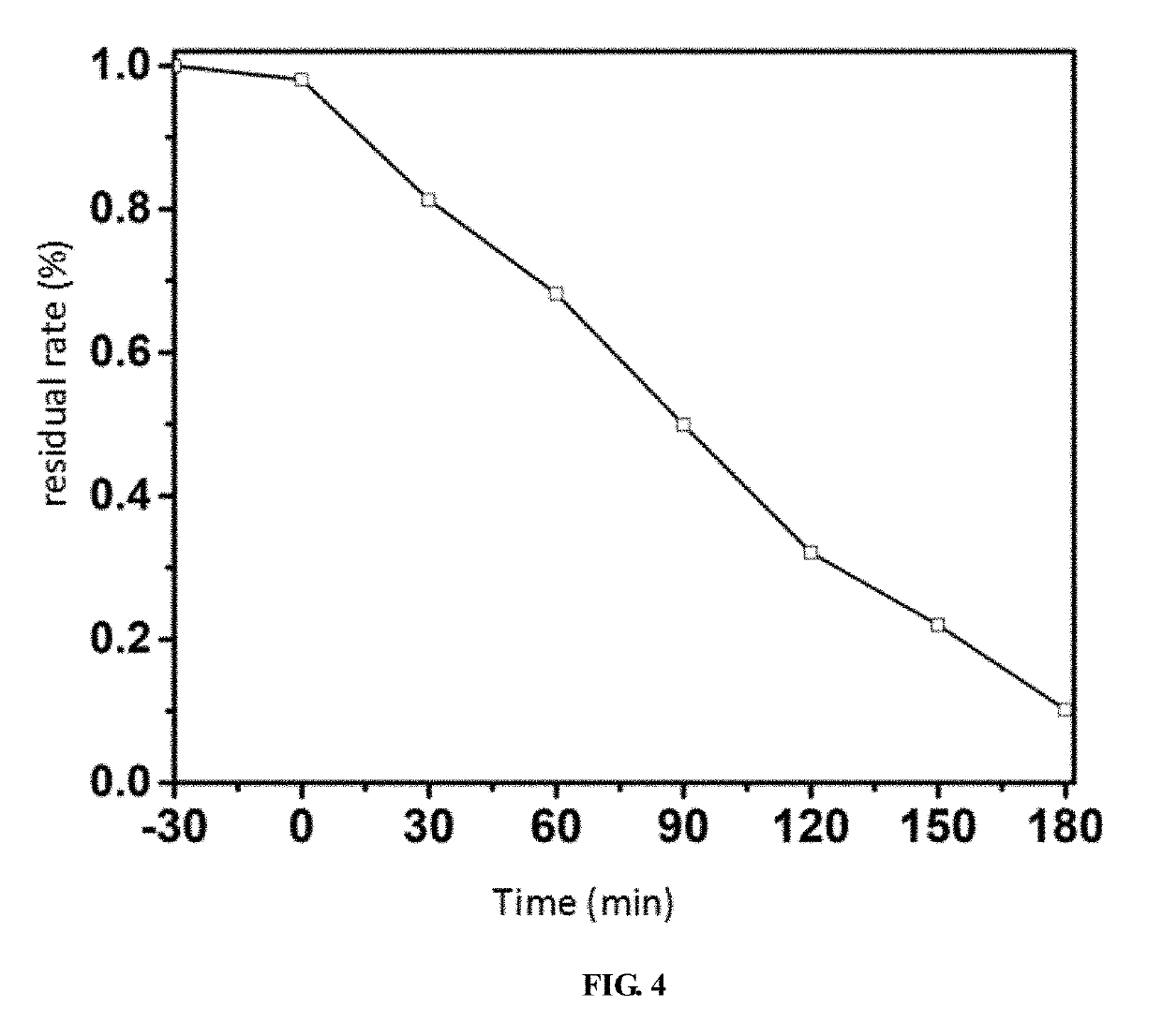Three-dimensional composite material, preparation method thereof and application thereof in removal of water pollutants by visible light catalytic degrading
- Summary
- Abstract
- Description
- Claims
- Application Information
AI Technical Summary
Benefits of technology
Problems solved by technology
Method used
Image
Examples
Embodiment Construction
[0043]The invention will be made a further explanation according to the following figures and the specific implementations.
[0044]Implementation 1:
[0045]Synthesis of Monodispersed Polystyrene Spheres.
[0046]100 mL deionized water, 12.18 g styrene and 0.5 g polyvinylpyrrolidone (K30) were added to 250 mL flask, and stirred for 30 min at room temperature. 0.3 g potassium persulfate was dissolved in 20 mL deionized water, and the above solution is added to the flask. Nitrogen was pumped for 1 h and then the system was reacted at 70° C. for 24 h. After the reaction was finished, the bulk was filtered. The filtrate was washed with deionized water by centrifuging and then freeze drying to obtain solids.
[0047]Implementation 2:
[0048]Synthesis of Polystyrene Opal Templates.
[0049]Polystyrene powder was dispersed in deionized water with concentration of 0.125 wt %. 1 mL polystyrene dispersing solution and 1 mL deionized water were added in weighing bottle. The clean FTO glass was inserted into t...
PUM
| Property | Measurement | Unit |
|---|---|---|
| Temperature | aaaaa | aaaaa |
| Temperature | aaaaa | aaaaa |
| Temperature | aaaaa | aaaaa |
Abstract
Description
Claims
Application Information
 Login to View More
Login to View More - R&D
- Intellectual Property
- Life Sciences
- Materials
- Tech Scout
- Unparalleled Data Quality
- Higher Quality Content
- 60% Fewer Hallucinations
Browse by: Latest US Patents, China's latest patents, Technical Efficacy Thesaurus, Application Domain, Technology Topic, Popular Technical Reports.
© 2025 PatSnap. All rights reserved.Legal|Privacy policy|Modern Slavery Act Transparency Statement|Sitemap|About US| Contact US: help@patsnap.com



